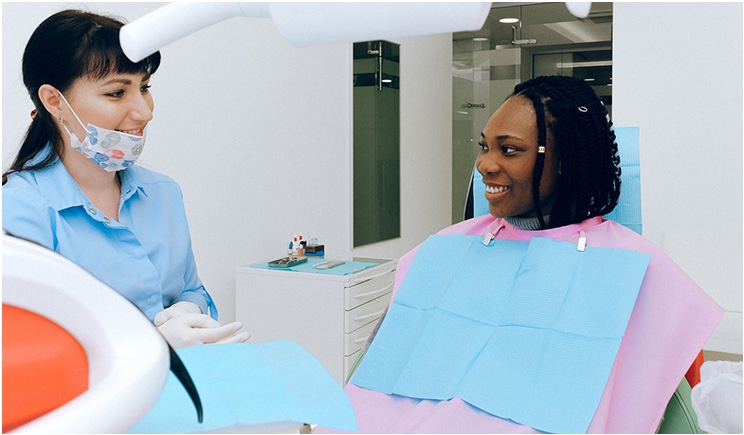
When I ask dentists about how happy their patients are, I am always told that they are “extremely happy.” The same answer comes from the dental team.
I suspect most patients are happy. But I’ve also come to believe that some of this unbridled belief in patient happiness comes from the optimistic perception of the doctor and team and the pride they have in their practice and the work they do.
Unfortunately, it’s only the patient’s perception that counts. The truth is that most practices don’t have any type of customer service assessment. This makes it next to impossible to really know how many patients are truly happy.
Again, I suspect it is the majority. But there is the question of what percentage is not happy or less than happy. Is it 2%, 5%, 8%, or 12% or more? The simple way to find out is to follow up with the patient.
Follow-Up Is a Standard Part of Business
Many five-star customer service businesses follow up regularly with their customers. I was recently a guest presenter of a seminar at the Ritz-Carlton. I had a full 24 hours at the Ritz where I had dinner, used the gym, went to coffee shop, and shopped at the gift shop. When I returned home, I received an email survey that asked 10 questions about my stay at the hotel.
We have come to almost expect to be asked to complete a survey after conducting business with a product or service company. Although I filled out the survey and was pleased with my experience, it didn’t necessarily add to my feeling of loyalty, appreciation, or bonding with the Ritz-Carlton hotel chain.
There’s nothing the hotel did wrong, but there was no relationship enhancement in the email that I received. It felt one-sided and did not enhance my relationship with its brand. It wasn’t a bad way to find out how guests felt about their experience at the Ritz-Carlton, but it wasn’t necessarily a relationship building opportunity. Follow-up is good, but great follow-up is a game changer.
Dental practices should start thinking of great follow-up as a standard part of their patient relations. The single best approach to follow-up is to make a phone call and have a live conversation. It will not only help the practice acquire information from a customer service standpoint, but it will also add to the relationship with the patient and increase patient longevity, bonding, and loyalty.
Consider three strategies for follow-up phone calls: the evening phone call from the doctor, the next-day call from staff, and calling dissatisfied patients.
The Evening Phone Call from the Doctor
The single best way for a dental practice to assess customer service and follow up with patients is to make an evening phone call. The evening phone call made by a doctor is powerful. Dentists who make evening phone calls typically have better practices, higher patient longevity, and better patient relations. Think about it from the patient’s point of view. The highest authority in the practice, the doctor, is calling to see how they are doing.
The Next-Day Call from Staff
There should be time set aside every morning for a staff member to reach out to patients by phone. Most of the calls will go to voicemail. However, voicemail is fine if a scripted message is left indicating that the practice is calling to check on the patient. Remember, the goal is not only to assess the customer experience, but to also send a message of caring.
Any responses from patients that are less than excellent should be noted in a logbook and, if possible, addressed. Otherwise, the goal is to look for any level of dissatisfaction and any trends. For example, was it reported by several patients that the practice ran late, someone was rude, or the doctor seemed rushed? There should be a meeting held around how to improve any area of patient dissatisfaction.
Call Dissatisfied Patients
If there is a patient complaint on the day of treatment, it should be reported to the doctor before the end of the day. We encourage doctors to reach out that evening to contact the dissatisfied patient, who may at this point be thinking about leaving the practice.
The doctor must listen to the patient to understand the situation and let them know what will be done to correct things. This will help to reduce the number of patients who leave due to dissatisfaction.
Your Turn
Very few practices follow up with patients to assess customer satisfaction, and even fewer conduct great follow-up using phone calls. The benefit of following these actions is that patient loyalty, bonding to the practice, and longevity will all increase. Within a few short years, the patient base will be larger than it would have been otherwise, which always translates into higher practice production.
Dr. Levin is the CEO and founder of Levin Group, a leading practice management consulting firm that has worked with over 30,000 practices to increase production. A recognized expert on dental practice management and marketing, he has written more than 60 books and more than 4,000 articles and regularly presents seminars in the United States and around the world. To contact Dr. Levin or to join the 40,000 dental professionals who receive his Practice Production Tip of the Day, visit levingroup.com or email rlevin@levingroup.com.
Related Articles
How Systems Can Upgrade Your Dental Practice
Pandemic or Not: Seven Habits to Adopt in 2021
Bring the Fun Back to Your Dental Practice











